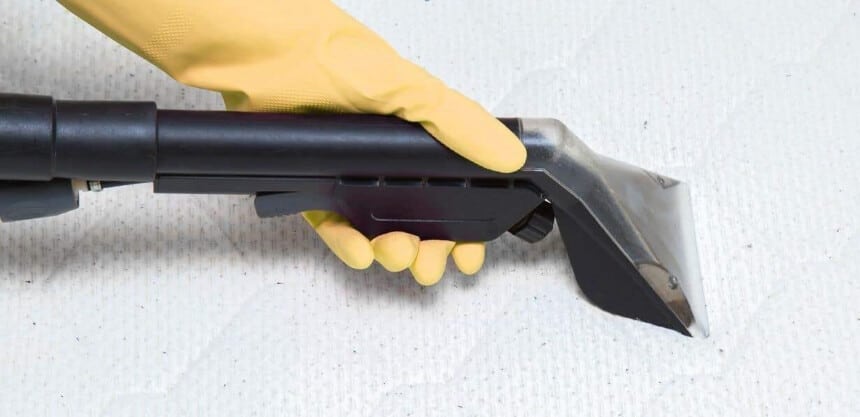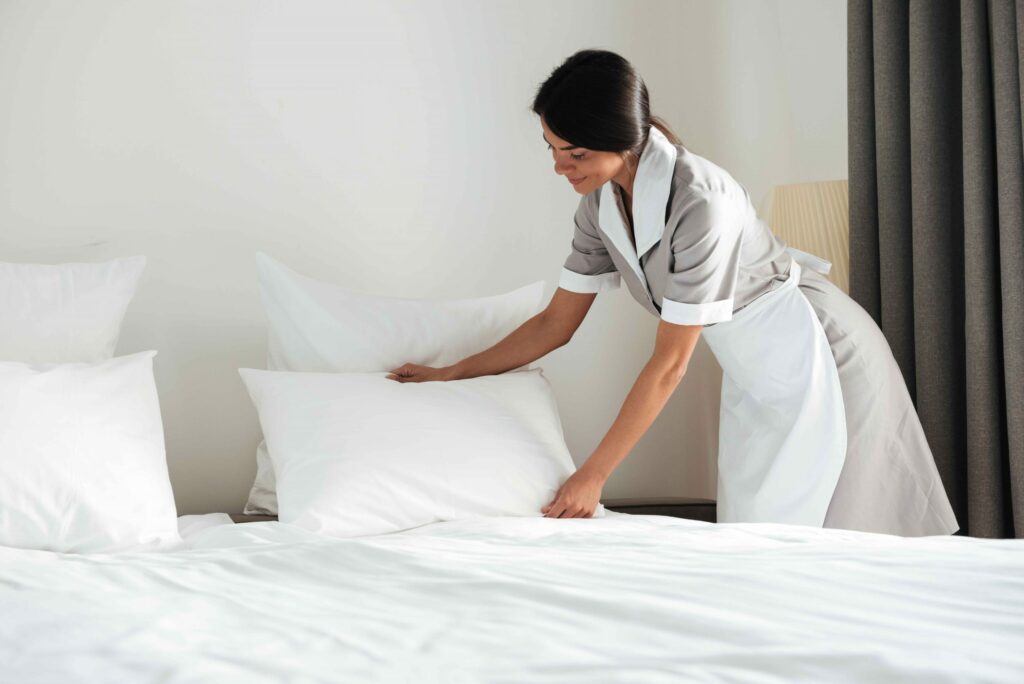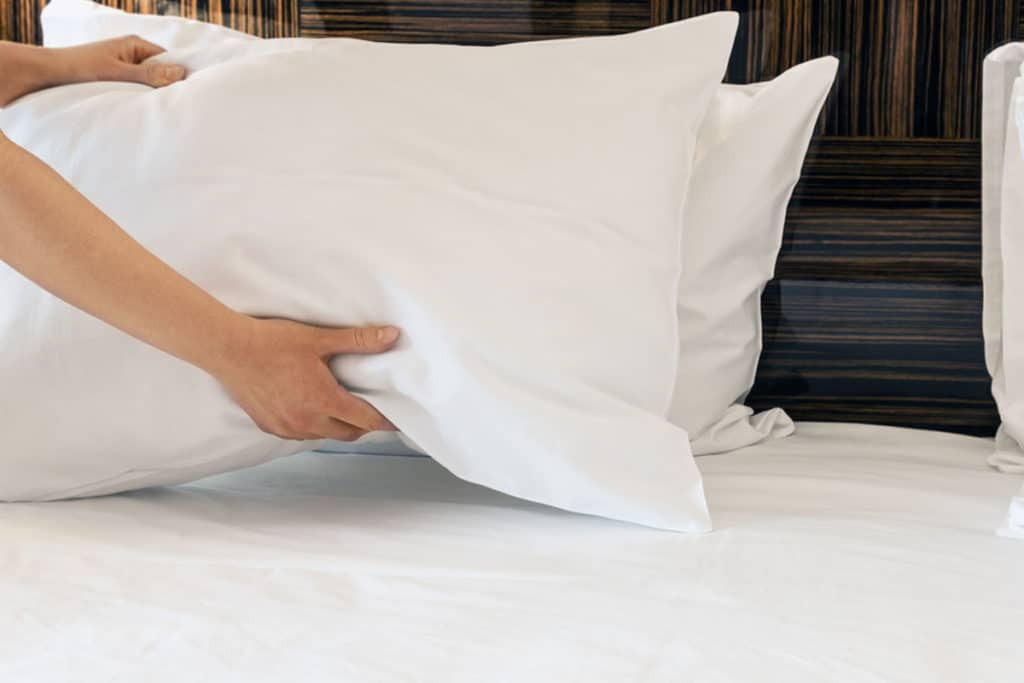

Though it is recommended Trusted Source When Should You Replace Your Mattress? | Sleep Foundation When should you replace your mattress to ensure quality and restful sleep? Mattress replacement guidelines vary depending on many factors. Learn more here. www.sleepfoundation.org that you replace the pillows on your bed every 2 years or so, this doesn’t mean that your pillow will stay fluffy the entire time you’re using it. Over time, pillows start to flatten out, with lumps forming that can make them a bit uncomfortable to sleep on. Of course, you don’t need to suffer by keeping those pillows on your bed in their flattened state. You can remedy this situation quite easily by learning how to fluff a pillow properly.
There are a few different ways that you can fluff your pillows, depending on the materials they are made of. Different materials need different methods, but the results are nearly the same. Your pillows can be plump and comfortable again with a little effort, restoring them to their former glory and prolonging their lifespan to save you money on replacement pillows. If you’re interested in learning how to fluff a pillow but aren’t sure where to start, keep reading.
Your pillows are soft and fluffy when you buy them, but after a few months of use, they lose their plumpness, flattening out and developing lumps that aren’t so comfortable to sleep on. So, what causes Trusted Source When Should You Replace Your Pillow? | Sleep.org Pillows have shorter lifespans than you may guess. Find out how often you should be shopping for a new one and how to tell when it’s time for yours to go. www.sleep.org this to happen to an otherwise great pillow?
Consider how often you put your head down on a pillow. As well as sleeping on them at night, there are also naps, plus many of us read or watch television in bed, using our pillows even more often.
Though your pillow may look clean after all this use, it has absorbed all of the dead skin cells, dirt, oil, and hair that comes off of your head and neck. This collects not only on the surface of your pillow but also inside of it. This weighs down the material inside, flattening it out over time. To remedy this, you should wash them when possible. You can also try to re-fluff a pillow as often as you can.
There are a few different pillow types on the market, but down pillows are one of the most common. They are soft, comfortable, breathable, and mold to the shape of your head and neck. The Continental Bedding 100% Goose Down Pillows are a good example of the high-quality materials and comfort these types of pillows have to offer. Of course, they don’t stay fluffy forever, so you need to learn how to fluff a feather or down pillow to keep it looking and feeling its best.
Fluffing a down pillow by hand is rather simple. All you need to do is lay it flat, then put a hand on each of the short sides. Lift the down pillow and then quickly squeeze it in and then let it out again. Do this repeatedly for about 30 seconds, then flip it over and repeat this process with your hands on the long sides.
You can also punch, slap, and knead your pillow to help increase airflow and puffiness while breaking up the materials inside.
Before putting any pillow in the dryer, check the tag to be sure it is safe to do so. If it is dryer-safe, set your dryer to low heat and place the pillow inside it. Add a few tennis balls to a sock and place them in the dryer as well to knead and fluff the pillow as it turns. Run it for 15 to 20 minutes to achieve the desired fluffiness.
You can also let nature take care of the fluffing process. All you need to do is place your pillow outside on a clean surface in a sunny spot. The heat from the sun combined with the outside air will help dry out any moisture inside, plus it will help to reduce those unwanted odors as it re-fluffs your down pillow.
Memory foam pillows are quite popular because they are designed to align your neck and spine, reducing pain in these areas while you sleep. They also retain their shape longer than other softer pillow types, which lengthens their lifespan. These pillows don’t last forever, though, so you do need to fluff a memory foam pillow now and then to ensure they maintain their shape.

You can also fluff a pillow in the dryer, though you need to be careful with memory foam. You should use the no-heat and air-only settings, running the dryer for only 20 minutes. This will ensure the pillow comes out intact and undamaged.
Yes, the cover material plays a role in how flat a pillow can get. The cover protects the inside of the pillow from the dirt, dust, oil, hair, and anything else that comes in contact with it.
Cotton pillow covers are absorbent and breathable, so though they may collect moisture, they also let it escape, which can keep your pillow from flattening out too quickly. Linen is also light and breathable, allowing airflow through your pillow while you sleep.
Nylon isn’t the most absorbent material, so instead of absorbing moisture, it repels it, keeping your pillow dry. The downside is that it also makes you sweat for a less comfortable sleep.
This material isn’t breathable either, limiting the airflow into the pillow, so anything it does collect will be trapped inside. This may make the pillow flatten out quicker, so try to stick to the more breathable fabrics for longer-lasting fluffiness.
No matter what type of pillow you have, there are a few things you can do to prolong the fluffiness. As well as fluffing it regularly, you should rotate your pillows, flipping them over as often as possible. If you have more than one pillow on your bed, rotate them as well, sleeping on a different one every night.
If the pillow is washer safe, you can also wash it once in a while to get rid of the dirt, oil, dust, and allergens that have been absorbed. Removable pillow covers are also washable, so toss them in with your other bedding for a cleaner sleeping area. If there is no removable cover, you can throw an extra pillowcase over your pillow to keep it as clean as possible.
Pillows are almost as important as your mattress when it comes to getting a comfortable night’s sleep. Though they don’t stay fluffy forever, a flat pillow doesn’t automatically need to be tossed and replaced with a new one.
Depending on the pillow you buy, there are several ways to plump them back up to their former glory. Whether you do this by hand, in a dryer, or let nature do the work for you, fluffing your pillows can prolong their life and ensure that you’re getting the best sleep possible. Higher quality pillows will also last longer, so be sure to buy the best pillow you can for long-lasting plumpness.





